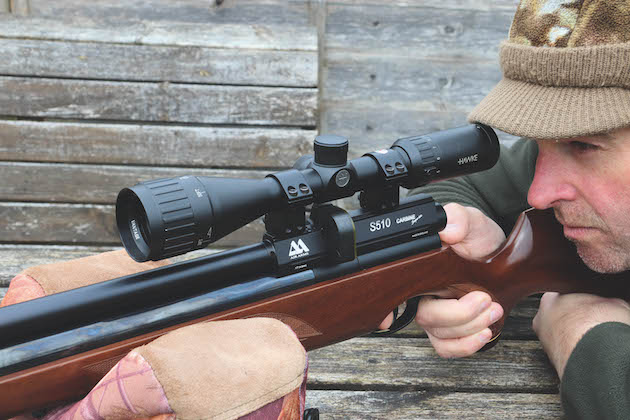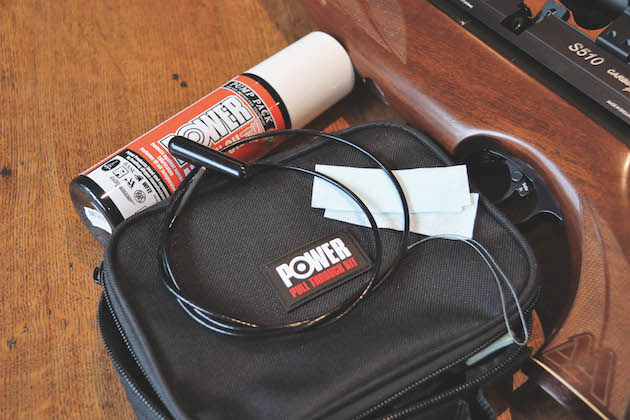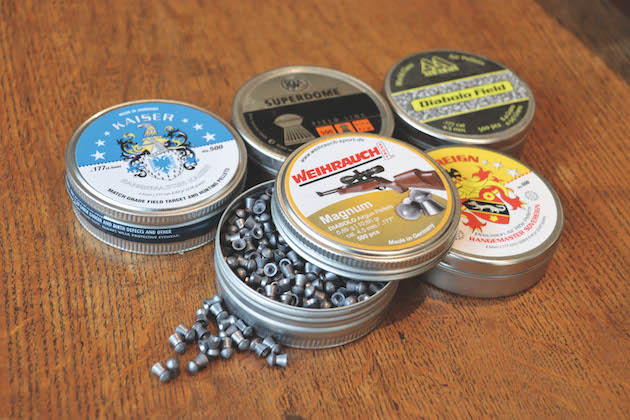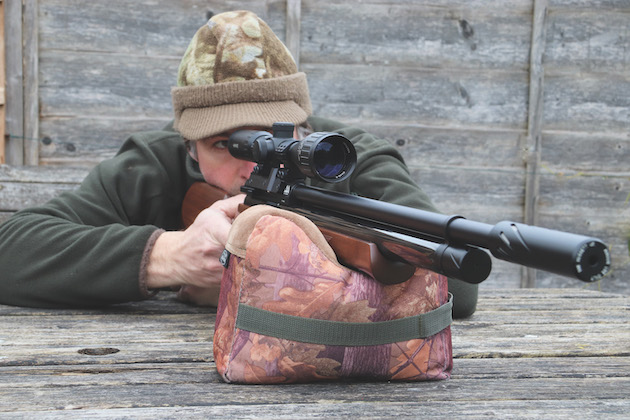Win CENS ProFlex DX5 earplugs worth £1,149 – enter here
How to make your airgun more accurate
 Never underestimate the importance of correct scope-mounting â it is the vital link between gun and optic
Never underestimate the importance of correct scope-mounting â it is the vital link between gun and optic
Precise air rifle shooting
The pursuit of precision is a big deal when it comes to air rifle shooting. Because air rifles have a relatively low power output, it is vital to be confident of landing your pellet in exactly the right place if you intend to shoot live quarry. Backyard plinkers will also be able to enjoy the thrill of toppling tins more frequently, and at greater ranges, by following a few simple steps to improve accuracy. Newcomers to the sport can usually gain from making some basic tweaks to their set-up or technique and it is surprising how many seasoned Shots aren’t getting it quite right with their air rifles.
Frequent practice always plays a key role because nothing beats being familiar with your equipment and its nuances. But there are a few other tricks that can improve airgun accuracy without any significant outlay. In most cases, a small change can make a big difference.

Barrel cleaning can improve accuracy but make sure you use tools and chemicals that are intended for airgun use.
Barrel cleaning
Some airgun shooters get too hung up on barrel cleaning, but it can remedy problems with accuracy. It is always a good idea to clean the barrel of a new airgun to remove any factory lubricants and grime, and it is also a job worth doing if accuracy suddenly starts to deteriorate for no apparent reason. Some of the tools and chemicals used for cleaning powder-burning rifles are too harsh for airgun barrels, so it is worth using specialist equipment. Felt pellets are effective but I would recommend investing in the Power Pull Through Kit from Napier — it contains everything you need for the job, including clear instructions, and will last for years. Don’t be alarmed if your airgun initially appears to have lost accuracy after barrel cleaning. Most barrels need a thin lining of lead to perform at their optimum and you should see groups really start to tighten up after putting a few dozen shots through.
Scope mounting
The importance of mounting a scope properly cannot be overemphasised as it creates the vital connection between gun and optic. Begin by choosing a mount of a height that provides good eye alignment and ensure that eye relief — the distance between your eye and the scope — is correct and results in a sharp image that fills the sight picture. Before tightening the screws in the rings that cradle the scope tube, make sure that the vertical element of the reticle is dead upright. When satisfied with the position of your scope, tighten the screws gradually, working to achieve an even tension at each side of each ring — be careful not to overtighten because this can damage the scope. If you bought your airgun/scope combo already set up, don’t assume that the job was done correctly in the shop — even if it was, the position of the scope may not be correct for you. Recoiling air rifles can suffer scope creep as a result of the motion of the firing cycle causing the mounts to shift. A one-piece mount, which provides more clamping area, will usually fix this problem.

Experiment with a selection of pellets from reputable manufacturers and you will probably find that your airgun favours one over the rest.
Pick the right pellet
Different airguns perform differently with different pellets — even ones that have rolled off the same production line. For this reason, it is worth experimenting with different types of ammunition to see what gives the best results from your gun. Buying lots of tins of pellets can be expensive but many retailers offer sample packs, or you could ask friends to give you a few to try from their stocks. As a basic rule of thumb, most airguns shoot more accurately with domed (roundhead) pellets than with pointed or hollowpoint designs. Cheap ammo is usually a false economy so stick with quality brands if you really want to get the most from your air rifle. Pellets that are produced to a high standard and consistent in weight generally return the best performance and can bring a significant boost to the accuracy of any airgun. The best way to test pellet performance is simply to set out paper targets at 25m and shoot five-shot groups from a rested position. Experiment with half-a-dozen different types of pellet and it is likely that you will find one or two that group much better than the rest.
Trigger set-up
A very heavy trigger can spoil accuracy by causing you to pull your airgun off aim. Apart from being dangerous, an unpredictably light trigger will also result in erratic shot placement. Many airguns have adjustable triggers, enabling you to tweak the weight and length of pull. With a typical two-stage trigger, you are aiming for a first stage that comes to a clear stop, followed by a positive, crisp and predictable second-stage break. Trigger adjustment can be complicated and is best left to a gunsmith if you are unsure of what you are doing.
Technique
With the mechanics of your trigger sorted, you then need to concentrate on technique. Make sure that the pad of your finger is in contact with the trigger-blade, rather than the groove behind it — the extra sensitivity makes it easier to feel and predict trigger let-off. It is wrong to regard pulling the trigger as the final step towards accurate shot placement. Good follow-through is imperative so do your best to hold on target until the pellet strikes its mark.Airguns powered by a spring and piston or gas-ram can generate a lot of recoil. This motion tends to happen before the pellet has left the barrel and can have a serious influence on shot placement. It may come as a surprise to learn that a tight grip is not the solution. It is impossible to strangle the recoil out of an airgun by tightening your hold, so the answer is to loosen up and allow the recoil to flow. Most importantly, you need to ensure that the recoil is always allowed to follow the same course because, if the gun always moves in the same way, each shot is likely to follow a similar path. It is all about consistency so adopt a gentle hold and do your best to support your recoiling airgun in the same way every time you shoot it.

A bench bag is handy when zeroing pre-charged airguns and testing pellets.
Gun support
One of the biggest problems to overcome when trying to shoot a rifle with precision is the movement of the human body. If you shoot a recoilless pre-charged airgun, the use of shooting sticks or, better still, a bipod will remove a lot of that human error and enable you to hold a much steadier aim. A bench bag stuffed with dried peas creates an excellent rest for pellet testing and, if you don’t want to splash out on a bipod, try supporting the fore-end with a rolled-up jacket when shooting prone. In the field, trees and fences can be used for added support. It is not so easy with recoiling airguns because they tend to bounce unpredictably when rested in different ways. However, you can use trees, gates and fences for extra stability but it’s best to lean your arm or body into them, rather than resting the gun. As long as you adopt your usual hold, and place your hand between the stock and whatever you are using as a support, the recoil should behave in much the same way as usual.
Related Articles
Get the latest news delivered direct to your door
Subscribe to Shooting Times & Country
Discover the ultimate companion for field sports enthusiasts with Shooting Times & Country Magazine, the UK’s leading weekly publication that has been at the forefront of shooting culture since 1882. Subscribers gain access to expert tips, comprehensive gear reviews, seasonal advice and a vibrant community of like-minded shooters.
Save on shop price when you subscribe with weekly issues featuring in-depth articles on gundog training, exclusive member offers and access to the digital back issue library. A Shooting Times & Country subscription is more than a magazine, don’t just read about the countryside; immerse yourself in its most authoritative and engaging publication.







